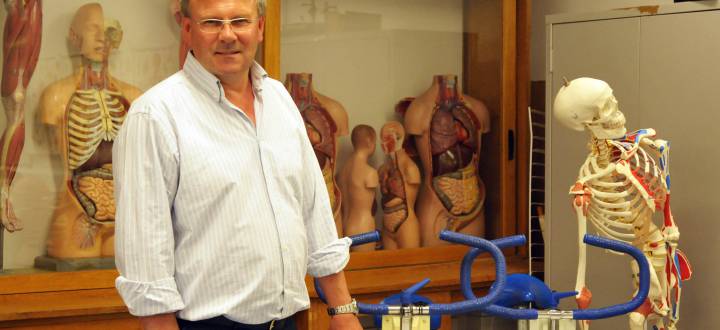Designing sensory enriched environments for people living with dementia

Research spearheaded by a design expert from Kingston University is shedding new light on the positive impact improved multi-sensory environments can have in dementia care.
A global health challenge
Dementia is seriously disabling for those who have it, and is often devastating for their caregivers and families. With an increasing number of people being affected by dementia, almost everyone knows someone who has dementia, or someone whose life has been touched by it. There are 850,000 people with dementia in the UK. With numbers predicted to rise to over 1 million by 2025, and soar to 2 million by 2051; it's no surprise that the condition has been recognised by the World Health Organisation as a global health challenge.
People with dementia often develop behavioural and psychological symptoms including restlessness, aggression, delusions, hallucinations, apathy and sleep disturbances. In many cases these symptoms are born out of frustration from an inability to communicate or interact with the world. Although medications used to control these problems, such as antipsychotic drugs and sedatives, achieve short-term results, they frequently cause side effects, and do not address the underlying causes of dementia symptoms. What a multi-sensory room offers is a non-pharmaceutical method to reduce and manage behavioural symptoms.
Multi-sensory environments (MSEs), or multi-sensory rooms as they are often called, were first used in the 1970s as therapeutic interventions for young people with learning disabilities, and provide gentle stimulation of sight, sound, touch, taste, smell, and movement in a controlled way. However, while studies over the past ten years have outlined the positive benefits of these rooms for people with dementia, many multi-sensory rooms in care homes are left unused.
Leading an interdisciplinary research project funded by AHRC
Dr Jakob, of Kingston School of Art, is leading an interdisciplinary research project funded by AHRC, in collaboration with occupational therapist, Dr Lesley Collier, from University of Southampton. One of the country's leading social and health care providers, Care UK, supports the research as a Project Partner. The project investigates the quality of multisensory stimulation on offer in English care homes with residents living with dementia, in particular the design of multisensory spaces. The research explores new approaches to designing and creating environments, as both a resource for meaningful leisure activity and a therapeutic intervention, that better suit the sensory needs of people with dementia in a care home context. Because little documented design guidance for MSEs for older people with dementia exists, the overall purpose of the research was to establish new knowledge from which coherent, user-centred design solutions can be developed.
The study involved a number of care homes in London and South England. The research discovered that in many cases the unused rooms were following design principles more suited to children than to adults, and were not tailored to the patient's needs. Space for children should look different to space for adults, and if the contrast between the care home and the multi-sensory room is too different, the room will not enhance feelings of comfort and well-being, but instead can cause anxiety.
As a result, a design guide entitled How to Make a Sensory Room for People Living with Dementia (PDF, 3.9MB) was published online that aims to support health care practitioners, care home staff, and carers to facilitate sensory spaces that are appropriate for residents with dementia and their families. The results of this first phase of the research were showcased at the exhibition ‘Sensory Rooms: Designing interventions to support dementia care', held in London. The research project will continue, developing proof of concept scenarios in the next stage.
"As a designer I am passionate about improving our environment, services and experiences on an aesthetic and functional level. Often, small changes in the design of spaces, objects or processes can have an enormous impact and can make a big difference in people's lives, in particular for people with physical and cognitive impairments who depend on help from others. Design thinking includes identifying problems, questioning the existing, and subsequently coming up with holistic, user-centred and inclusive solutions to improve the user experience. I therefore believe designers should be much more involved in all areas of life, business, healthcare and politics, to contribute with their unique abilities, making life easier and more enjoyable for all of us."
For more information about the project, see blogs.kingston.ac.uk/mse/
Find out more about Anke Jakob.

Contact us
- For non-student research enquiries, email the Research Office
- Research contacts
- Graduate Research School contacts
- Business and Enterprise contacts
- How to get to Kingston University
Contact us
- For non-student research enquiries, email the Research Office
- Research contacts
- Graduate Research School contacts
- Business and Enterprise contacts
- How to get to Kingston University


